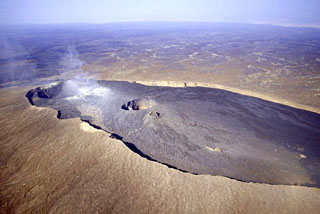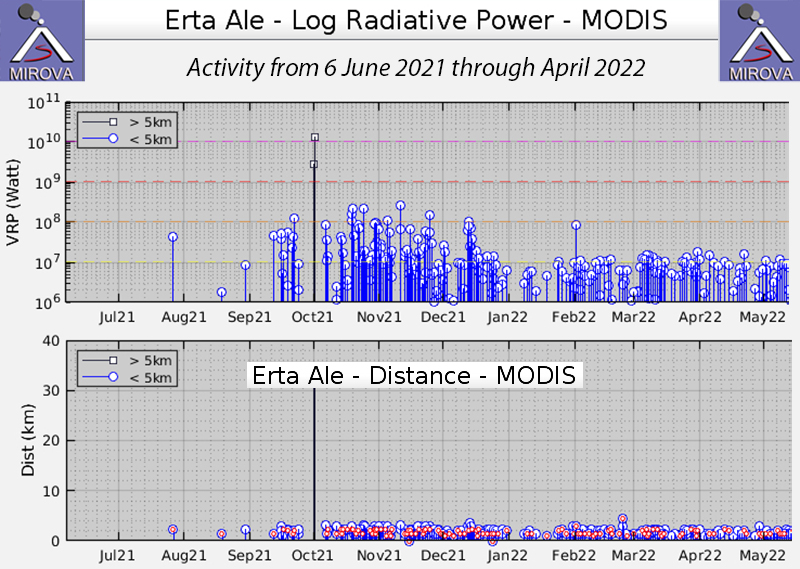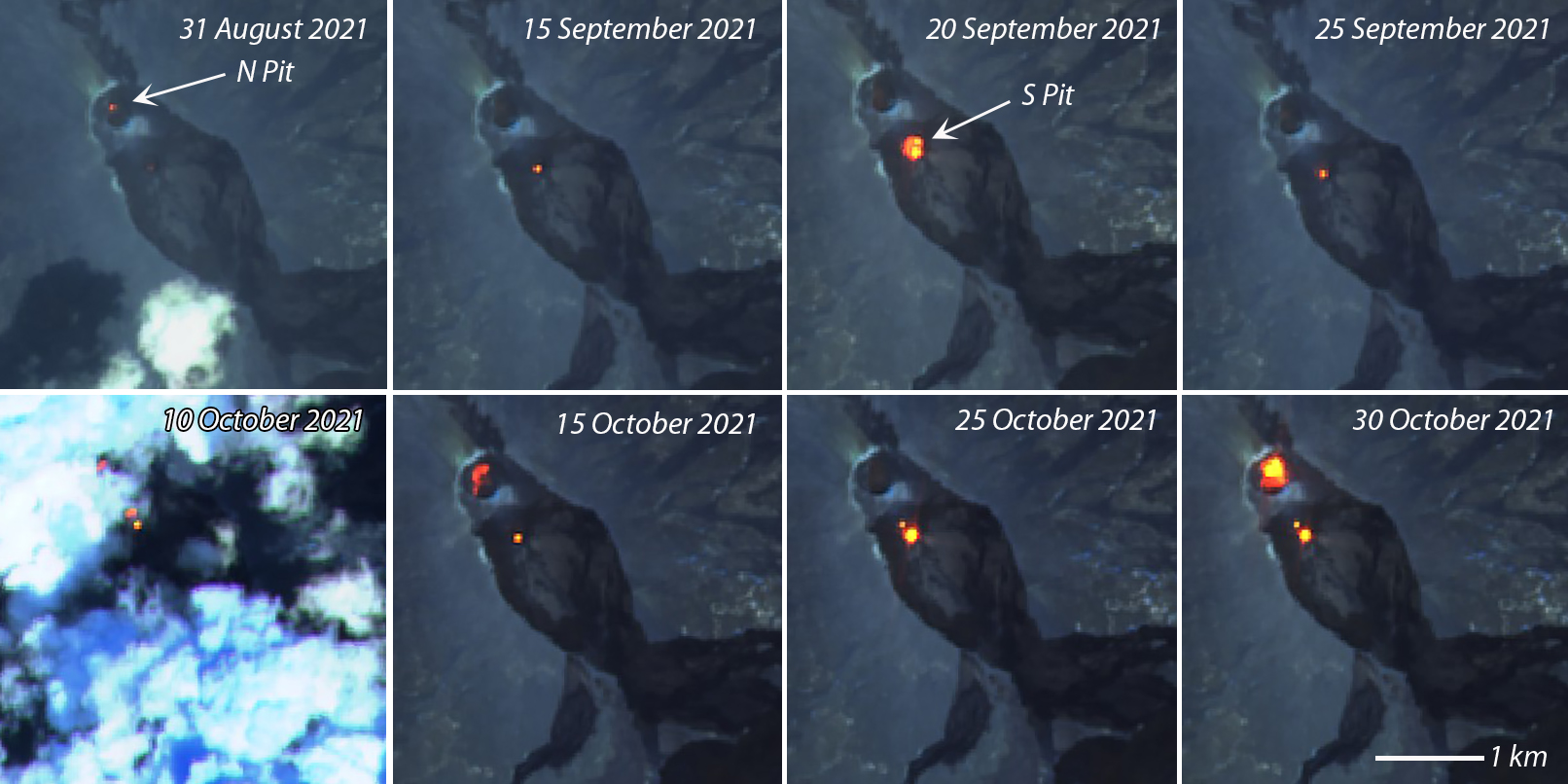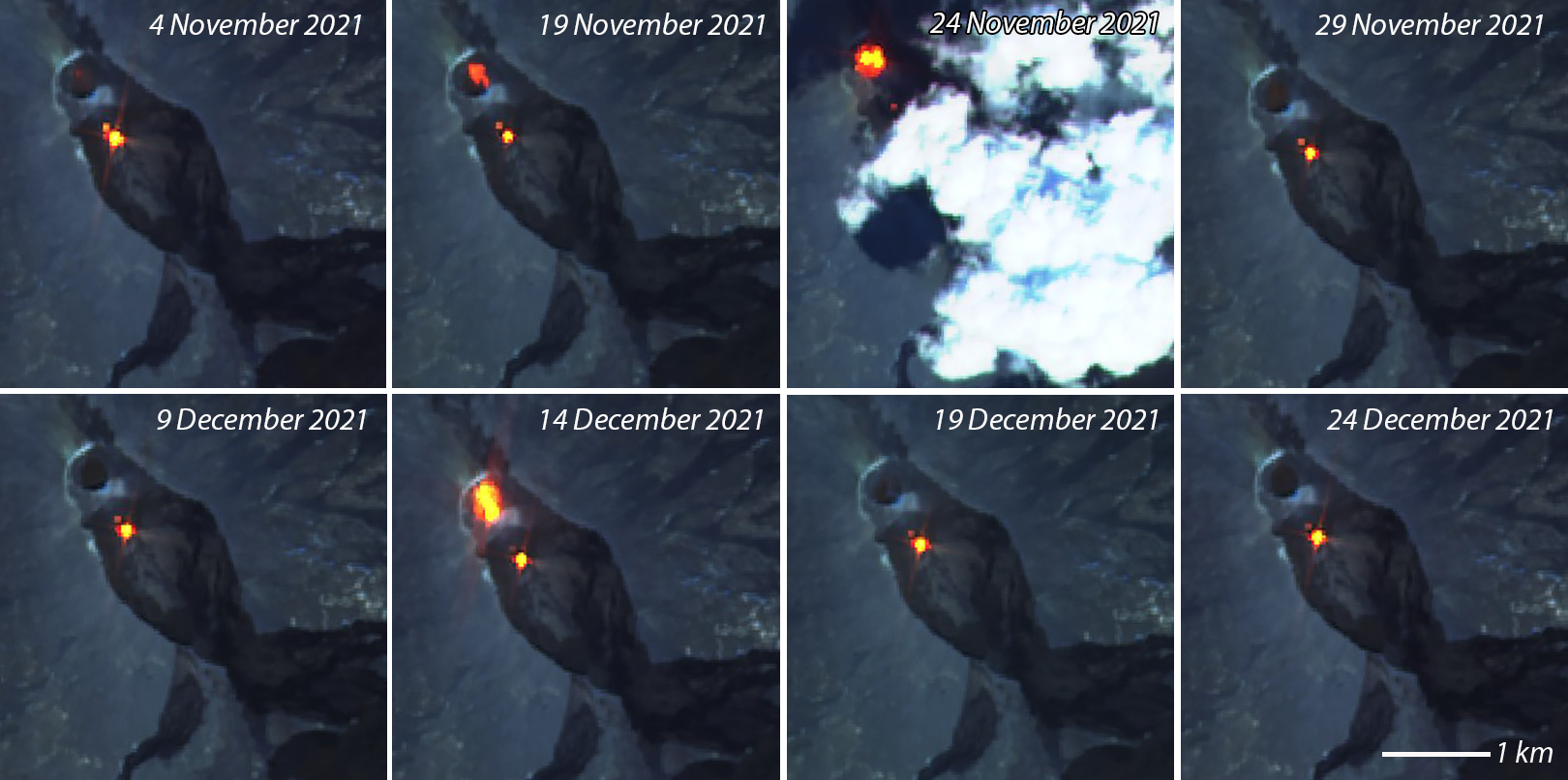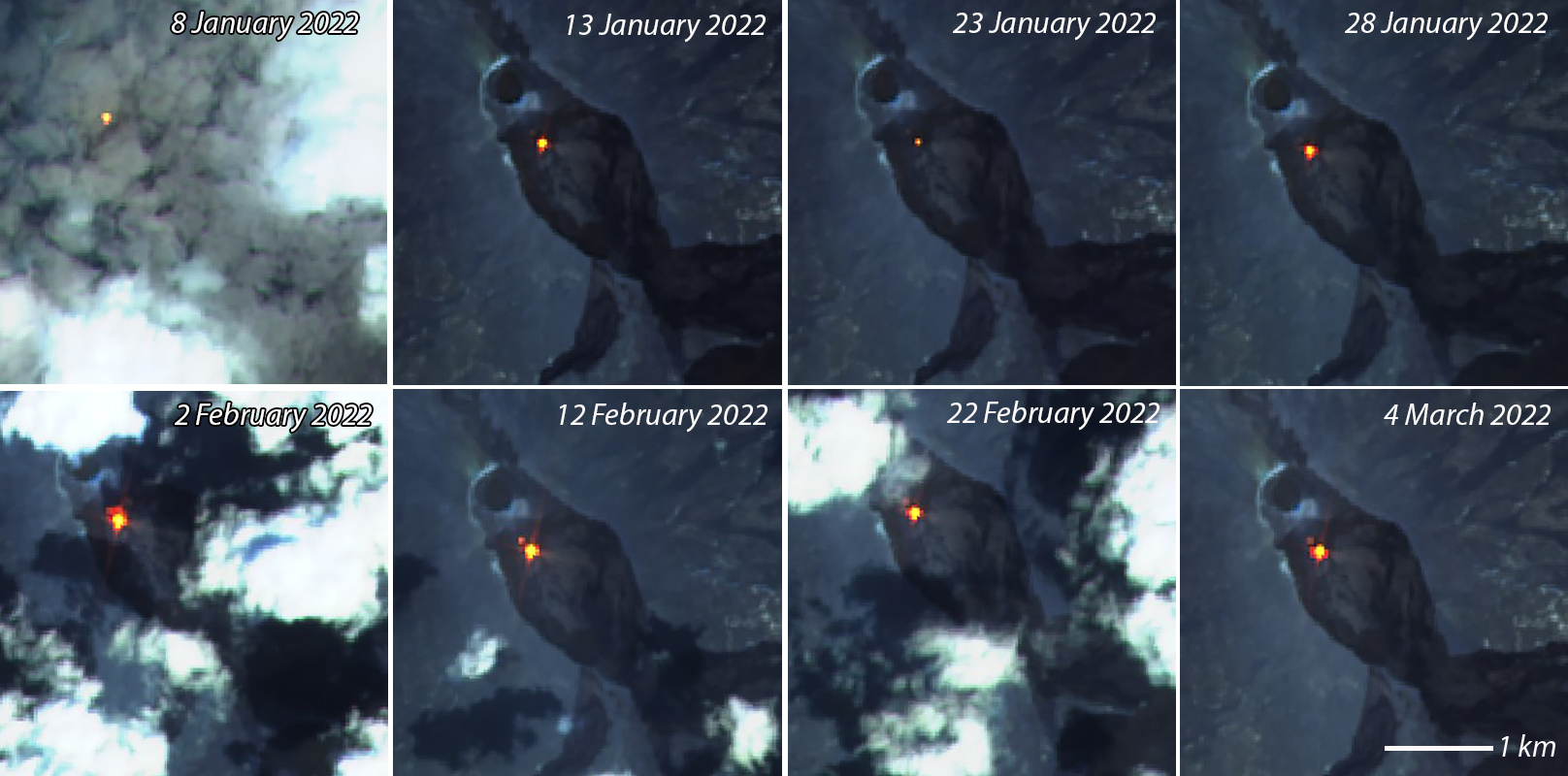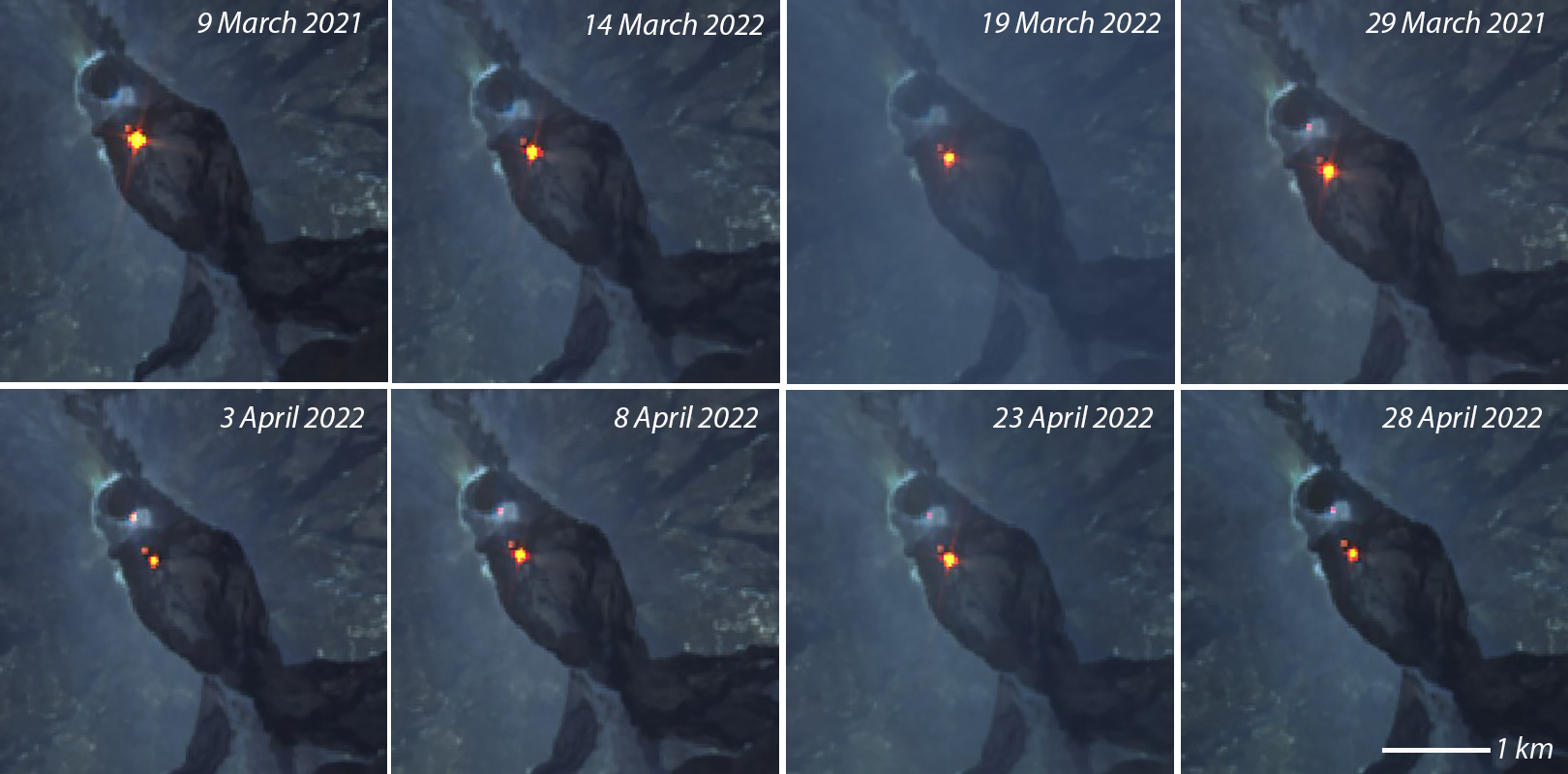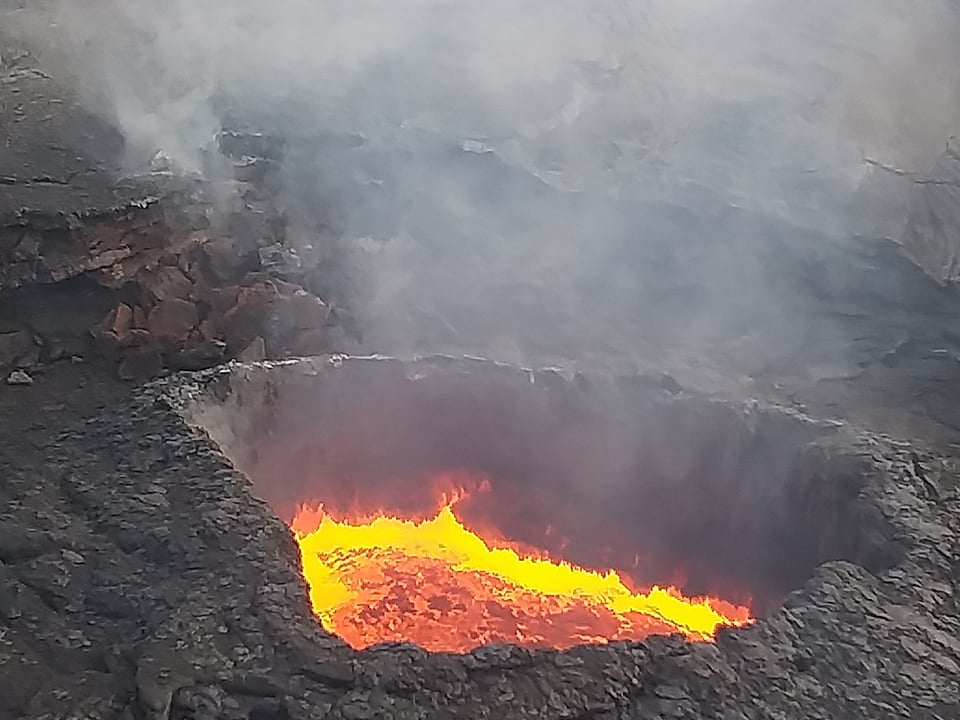Report on Erta Ale (Ethiopia) — May 2022
Bulletin of the Global Volcanism Network, vol. 47, no. 5 (May 2022)
Managing Editor: Edward Venzke.
Edited by A. Elizabeth Crafford.
Erta Ale (Ethiopia) Intermittent surges of activity at both caldera pit craters, September 2021-April 2022
Please cite this report as:
Global Volcanism Program, 2022. Report on Erta Ale (Ethiopia) (Crafford, A.E., and Venzke, E., eds.). Bulletin of the Global Volcanism Network, 47:5. Smithsonian Institution. https://doi.org/10.5479/si.GVP.BGVN202205-221080
Erta Ale
Ethiopia
13.601°N, 40.666°E; summit elev. 585 m
All times are local (unless otherwise noted)
Ethiopia's Erta Ale basaltic shield volcano has had at least one active lava lake since the mid-1960s, and possibly much earlier. Two active craters (north and south pits) within the larger oval-shaped summit caldera have exhibited periodic lava fountaining and lava lake overflows for many years. During January 2017-March 2020 a vent at the southeast caldera, a few kilometers SE of the summit caldera, produced lava flows that extended many kilometers from the main vents. Since March 2020 pulses of activity from both pit craters in the summit caldera have been recorded in numerous satellite thermal images. This report covers activity from September 2021-April 2022 when both the north and south pits were intermittently active. Information comes primarily from satellite imagery and thermal data, although reports and photographs from ground-based expeditions that periodically visit the site are occasionally available.
Multiple breakouts from persistent lava flows originating at the southeast caldera tapered off in March 2020; after this, intermittent low levels of thermal activity were focused at the N and S pit craters of the summit caldera, with occasional pulses of stronger activity in late November 2020 at the S pit crater and in late March and late May 2021 at the N pit crater (BGVN 46:02, 46:10). A return to more vigorous thermal activity in September 2021 was indicated by MODIS satellite data as an increased number of MODVOLC thermal alerts, increases in the MIROVA log radiative power frequency and intensity (figure 107), and numerous Sentinel-2 satellite images of thermal anomalies. Visitors to the site in December 2021, and January and February 2022, confirmed the active lava lake at the S pit crater.
Only a few of the Sentinel-2 satellite images of Erta Ale are cloudy, providing a consistent record of the changes in thermal activity in the summit caldera during the period. The S pit crater had thermal anomalies of varying intensity throughout, but the N pit crater was more intermittent. A very weak anomaly appeared at the N pit on 31 August 2021, but then not again until 10 October. It was larger on 15 October and bright on 30 October. At the S pit, the anomaly was present in all September and October images, and brightest on 20 September. Double anomalies appeared at the S pit for most of October (figure 108). MODVOLC thermal alerts were recorded on four days in September and nine days of October.
The thermal anomaly was weak at the N pit on 4 November 2021, brighter on 19 November, brightest on 24 November, and very weak or absent on 29 November. It was very bright on 14 December, but absent the other days of December. At the S pit, two anomalies were present in most images, one much brighter than the other, with a similar size and intensity throughout (figure 109). MODVOLC thermal alerts were issued on eleven days during November and six days during December.
No thermal anomaly was present at the N pit for all of January or February 2022. At the S pit, a single weak anomaly was present during January, and a brighter single or double anomaly was present throughout February and early March (figure 110). A single MODVOLC thermal alert was issued on 24 January, and alerts were reported on four days during February. A weak thermal anomaly was present at the N pit in the 29 March 2022 image and persisted in all of the April images. Consistent size and intensity double anomalies, one bright and one dim, were present at the S pit in all images for March and April (figure 111). MODVOLC thermal alerts were issued for five days during March and six days during April 2022.
Visitors to the S pit crater in late December 2021 and early January 2022 reported that the lake measured about 200 m in diameter and the level was about 30 m below the edge of the crater with fresh lava overhanging the crater rim (figure 112). Two collapses of the crater rim, widening the lake, were observed on 31 December-1 January 2022. In a second visit during 28-29 January 2022 the lake was still about 200 m in diameter with periodic small lava fountains (figure 113). On a 24 February 2022 visit the lava lake showed signs of constant activity with slabs of solidified crust moving around on the surface, bright orange lava in the cracks and spattering of lava a few tens of meters above the lake surface (figure 114).
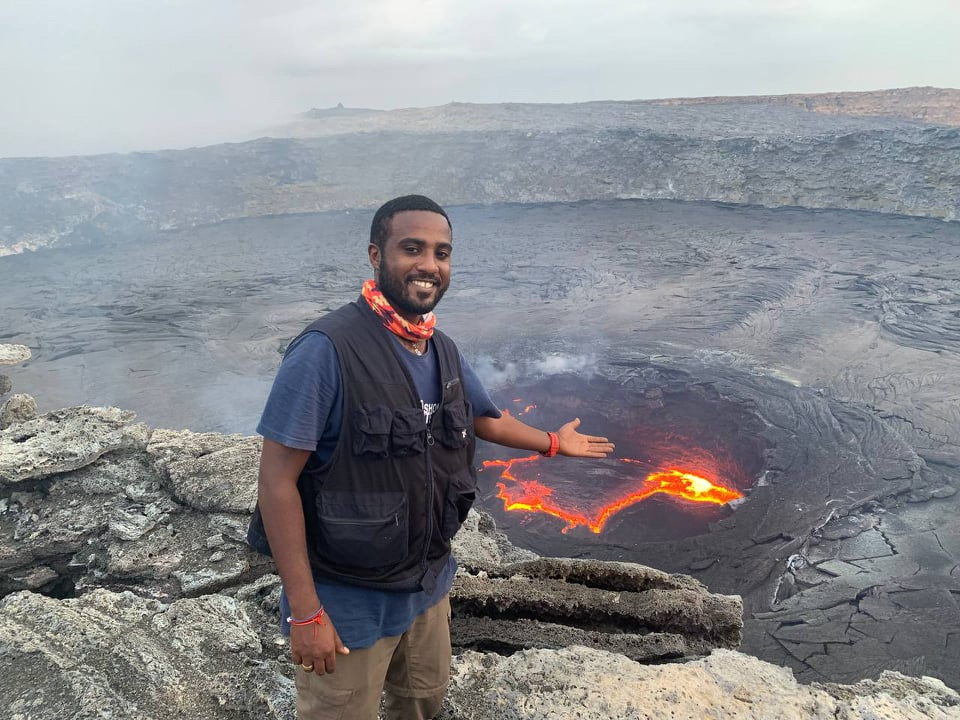 |
Figure 113. The lava lake at Erta Ale’s S pit crater was still about 200 m wide on 28 January 2022 and active with periodic lava fountains. Photo by Enku Mulugeta, courtesy of Volcano Discovery. |
Geological Summary. The Erta Ale basaltic shield volcano in Ethiopia has a 50-km-wide edifice that rises more than 600 m from below sea level in the Danakil depression. The volcano includes a 0.7 x 1.6 km summit crater hosting steep-sided pit craters. Another larger 1.8 x 3.1 km wide depression elongated parallel to the trend of the Erta Ale range is located SE of the summit and is bounded by curvilinear fault scarps on the SE side. Basaltic lava flows from these fissures have poured into the caldera and locally overflowed its rim. The summit caldera usually also holds at least one long-term lava lake that has been active since at least 1967, and possibly since 1906. Recent fissure eruptions have occurred on the N flank.
Information Contacts: MIROVA (Middle InfraRed Observation of Volcanic Activity), a collaborative project between the Universities of Turin and Florence (Italy) supported by the Centre for Volcanic Risk of the Italian Civil Protection Department (URL: http://www.mirovaweb.it/); Sentinel Hub Playground (URL: https://www.sentinel-hub.com/explore/sentinel-playground); Tom Pfeiffer, Volcano Discovery (URL: http://www.volcanodiscovery.com/).

